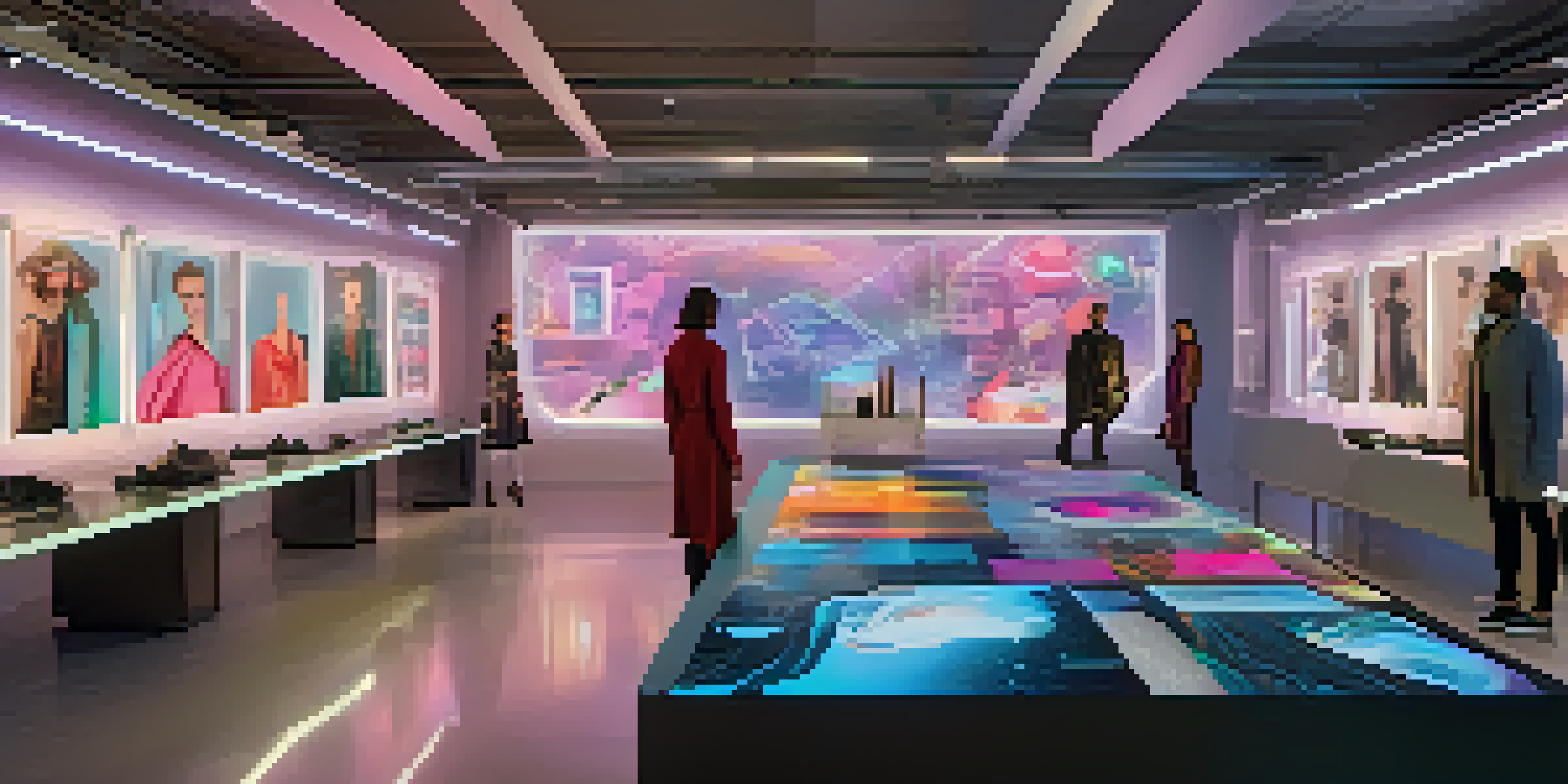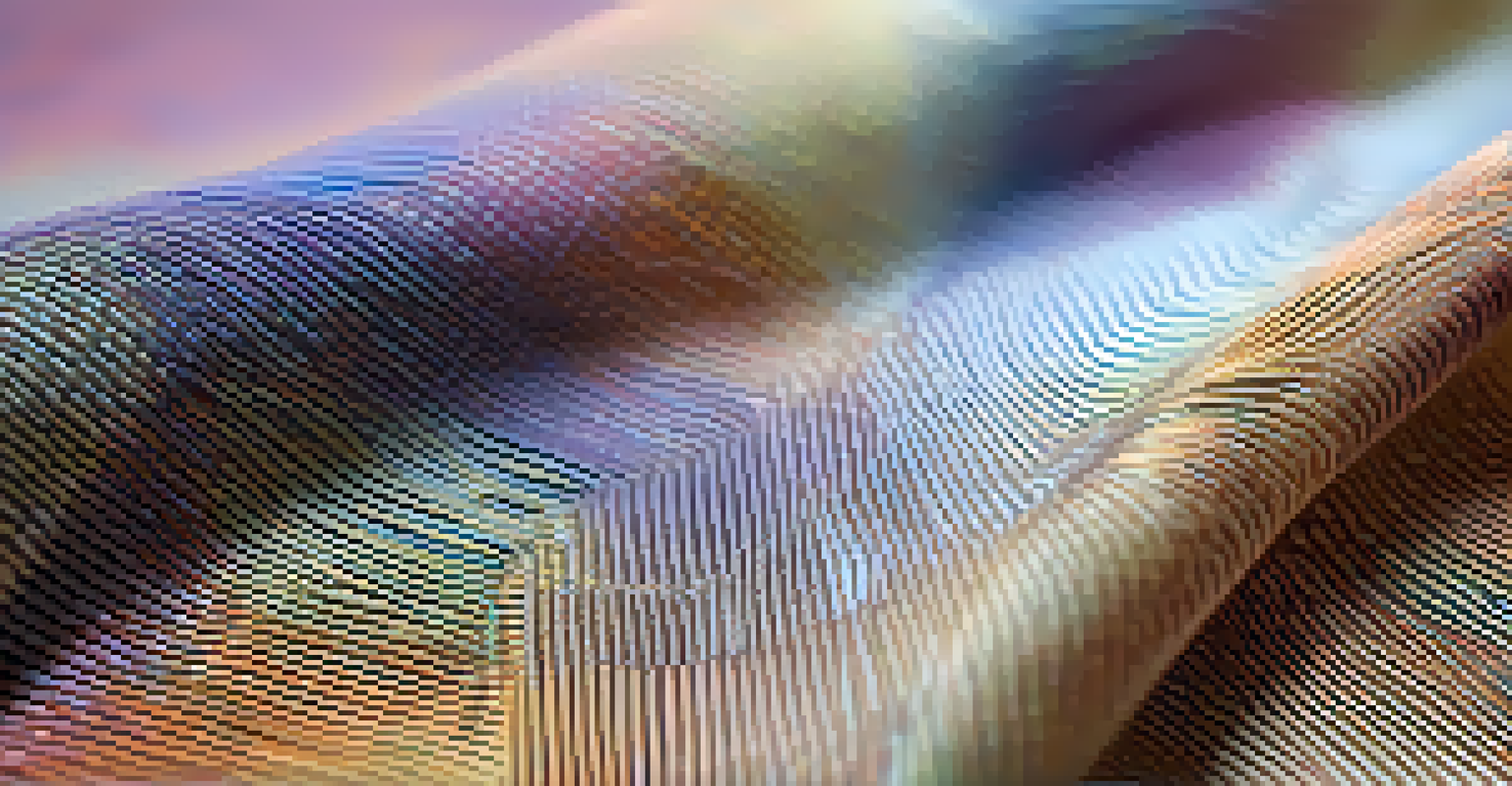AI in Fashion Design: Revolutionizing Creativity and Process

Introduction: The Intersection of AI and Fashion Design
The world of fashion is known for its creativity and innovation, but what happens when artificial intelligence enters the scene? AI is not just a buzzword; it's becoming a vital tool for designers, allowing them to push the boundaries of creativity and streamline their processes. This synergy between technology and fashion is revolutionizing the industry, making it an exciting time for both designers and consumers alike.
Fashion is the armor to survive the reality of everyday life.
By leveraging AI, designers can analyze trends, predict consumer preferences, and even create unique designs faster than ever before. Imagine a world where designers can spend more time innovating and less time on tedious tasks—AI is making that possible. This blend of art and technology is not only enhancing creativity but is also reshaping how fashion is conceptualized and produced.
As we dive deeper into this topic, we'll explore how AI is influencing various aspects of fashion design, from inspiration to production. Join us on this journey to understand the transformative power of AI in the fashion world.
AI as a Creative Partner for Designers
Gone are the days when design was solely the realm of human creativity. With AI algorithms capable of analyzing vast amounts of data, designers can now collaborate with machines that inspire new ideas and concepts. For instance, AI can analyze past collections and suggest innovative designs based on patterns and trends that might not be immediately obvious to a designer.

This partnership allows designers to tap into a wellspring of inspiration, making the creative process more dynamic and exciting. Imagine having a brainstorming buddy that never tires, constantly feeding you fresh ideas based on current market dynamics. This not only helps in creating unique collections but also keeps the designs relevant to consumers’ tastes.
AI Enhances Creativity in Fashion
Designers now collaborate with AI to generate innovative ideas and streamline their creative processes.
Moreover, AI can assist in visualizing designs through virtual prototypes, enabling designers to experiment without the constraints of physical materials. This reimagines the creative process, allowing for greater exploration and innovation.
Streamlining Production with AI Technology
In addition to enhancing creativity, AI is significantly improving the production process in fashion design. Traditionally, the path from design to production has been fraught with challenges, including miscommunication and inefficiencies. AI tools can streamline these processes by automating tasks, such as pattern making and fabric selection, which saves time and reduces errors.
The best way to predict the future is to create it.
For example, AI systems can predict the best materials for a particular design, taking into account factors like durability, cost, and environmental impact. This means that designers can make more informed choices, leading to better-quality products and a more sustainable approach to fashion.
By optimizing the supply chain and inventory management, AI helps brands respond more quickly to market changes, minimizing waste and maximizing profitability. This integration of AI into production processes is essential for brands looking to stay competitive in today's fast-paced fashion landscape.
Personalization: Tailoring Fashion to Individual Preferences
One of the most exciting applications of AI in fashion design is in the realm of personalization. Consumers today are looking for unique pieces that reflect their individual style, and AI is helping brands meet this demand. By analyzing customer data, AI can predict preferences and suggest personalized designs or recommendations, creating a more tailored shopping experience.
For instance, AI-driven platforms can analyze a customer's past purchases and browsing behavior to recommend outfits that align with their tastes. This not only enhances the shopping experience but also fosters brand loyalty, as customers feel understood and catered to.
AI Streamlines Fashion Production
AI tools optimize production by automating tasks and improving material selection, leading to higher efficiency.
Moreover, brands can use AI to create made-to-measure garments, ensuring that each piece fits perfectly. This level of personalization elevates the fashion experience, making it more than just a transaction but a relationship between consumers and brands.
Sustainability in Fashion: How AI Helps Reduce Waste
Sustainability is a growing concern in the fashion industry, and AI is playing a pivotal role in addressing this issue. By utilizing AI technologies, brands can optimize their production processes to minimize waste and reduce their environmental footprint. For instance, AI can help in demand forecasting, allowing brands to produce only what is needed, thus preventing overproduction.
Additionally, AI can assist in recycling efforts by identifying materials that can be reused or transformed into new garments. This not only promotes sustainability but also encourages innovative practices within the industry, as brands strive to create a circular fashion model.
As consumers become more environmentally conscious, brands that leverage AI for sustainability will likely stand out in the marketplace. This commitment to responsible practices can enhance brand image and attract a loyal customer base.
Challenges and Considerations in AI Adoption
While the benefits of AI in fashion design are clear, there are also challenges that brands must navigate. One key concern is the potential loss of the human touch in design, as some fear that an over-reliance on technology may stifle creativity. It's crucial for designers to strike a balance between utilizing AI as a tool and maintaining their unique artistic vision.
Another consideration is the ethical implications of AI, particularly regarding data privacy and security. Brands must ensure that they handle customer data responsibly and transparently, as trust is paramount in the fashion industry. Failure to address these concerns could lead to reputational damage and loss of customer loyalty.
Personalized Shopping Experiences
AI analyzes customer data to provide tailored recommendations, enhancing consumer engagement and brand loyalty.
As the industry evolves, it will be essential for designers and brands to engage in ongoing discussions about the ethical use of AI and how to integrate it without compromising the core values of creativity and individuality.
The Future of AI in Fashion Design: A Collaborative Journey
Looking ahead, the future of AI in fashion design appears promising, full of opportunities for collaboration between humans and machines. As AI technology continues to advance, we can expect even more innovative tools and applications that will further revolutionize the industry. This collaborative approach could lead to a new era of design where creativity and technology coexist harmoniously.
Think of AI as a muse that inspires designers to explore uncharted territories, pushing the boundaries of what fashion can be. As designers embrace this partnership, they can focus on storytelling and emotional connection while AI handles the intricate details of production and trend analysis.

Ultimately, the successful integration of AI in fashion design will depend on the willingness of designers to adapt and innovate. By embracing this technology, the fashion industry can continue to evolve, creating a vibrant landscape that celebrates creativity while meeting the demands of a modern market.